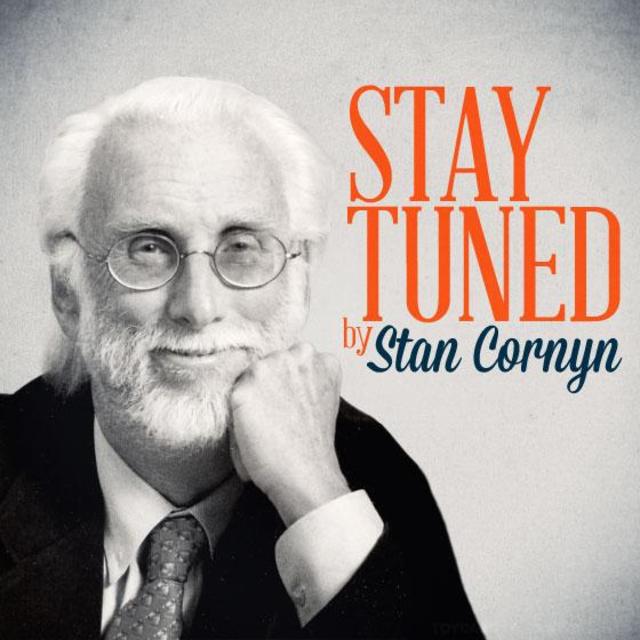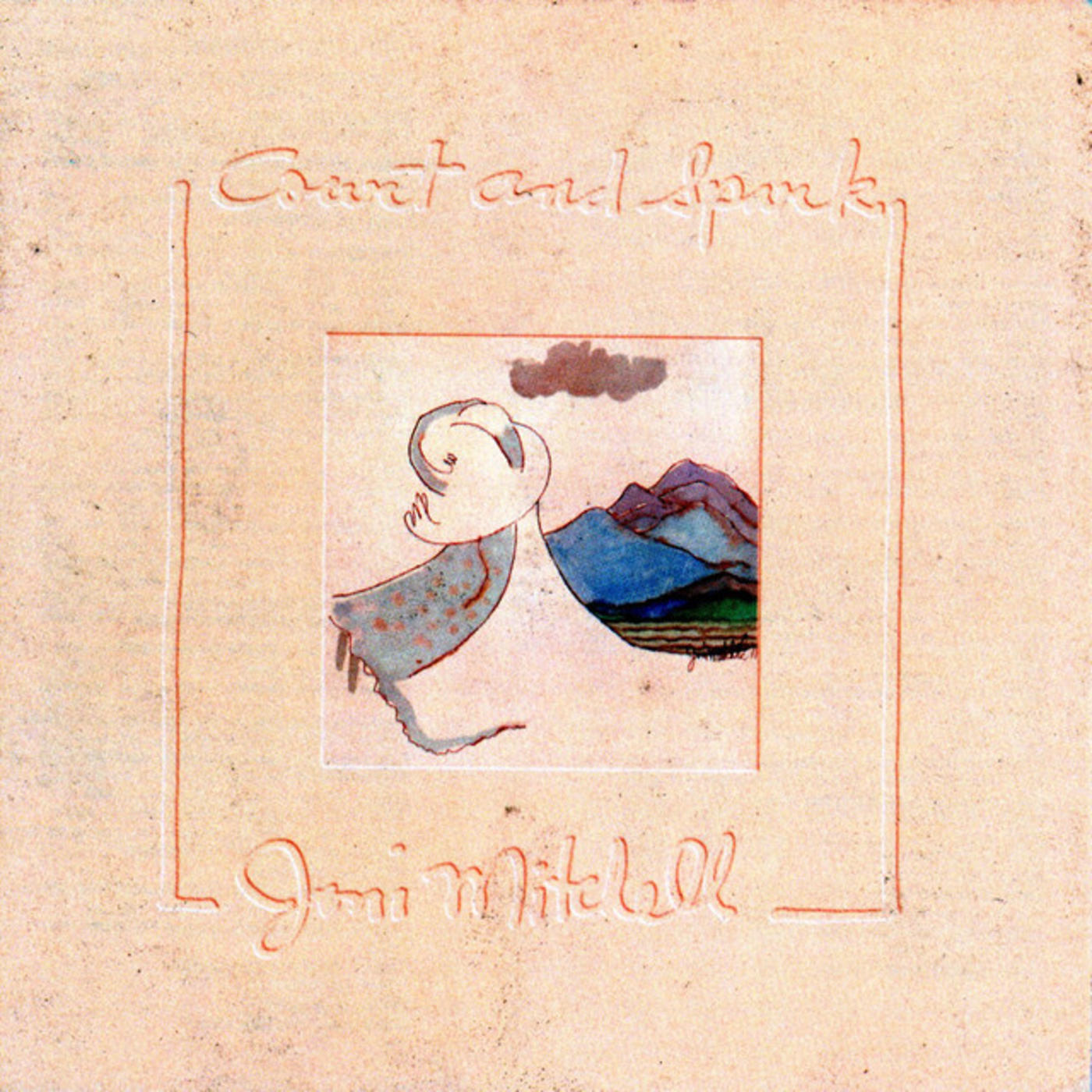Stay Tuned By Stan Cornyn: Geffen Grows Up

Every Tuesday and Thursday, former Warner Bros. Records executive and industry insider Stan Cornyn ruminates on the past, present, and future of the music business.
1973: WCI Merges Asylum and Elektra Labels
Steve Ross, head of Warner Communications, lived his whole life Blending two “goods” into “the best.” In 1973, once again, Steve was at it. He’d bought two goods: both Elektra Records and David Geffen’s Atlantic-based Asylum Records.
To transform those two into a “third most” (alongside the Warner/Reprise and Atlantic labels), Ross had turned to the energetic and artist-focused David Geffen, to do the actual merging work.
David (with his biz partner - his ears guy - Elliot Roberts) had done two years of start up with new his Asylum label deal at Atlantic. In those two yeas, Geffen had proved himself a lot more than a hyper kid in a T-shirt. He’d signed The Eagles. Not enough? OK, add Joni Mitchell, J.D. Souther, Tom Waits, Jo Jo Gunne, and Linda Ronstadt… Asylum had vitality, and a staff number of only six.
Asylum Artists (1972-3) became part of the merged companies in 1972, and focused on the charts. Included in that focus: The Eagles (Eagles, incl. “Take It Easy” and “Witchy Woman”; Desperado) • Jackson Browne (“Doctor My Eyes”, For Everyman) • Joni Mitchell (For the Roses) • Jo Jo Gunne (“Run Run Run”) • The Byrds • Linda Ronstadt (Don’t Cry Now).
Unlike his mentor at Atlantic, Ahmet Ertegun, Geffen’s way to “represent your artists” was a revolution, and utterly unlike Atlantic’s business approach. But the two of them, Ahmet and David, became inseparable friends, traveling together (Paris, where David quickly learned about collecting art and the importance of Louis Vuitton luggage). David (as did most of us) found Ahmet as entertaining a person as we’d ever meet. Or as David put it, “Ahmet was a lot of fun.”
But back to that difference between the two labels. David Geffen had also managed the artists that Asylum signed, a most unusual bond. It meant that a record company would work and sell and embrace its artists as never before: together, as one.
Geffen’s signing method struck artists as “just what I want in a label.” Geffen’s Asylum label was on the artists’ side, not a vast, complex company an artist had to marry warily. David pushed for his artists at a time when artists hankered for their own “artistic control.” This was no longer A&R men who knew it all, and us singers who had to fit into “it all.”
Asylum was built to serve its artists, and those artists became Asylum’s royalty as well as royalty-makers.
Putting on the Ritz
A year or so after Asylum’s founding, April 1973, and it is Atlantic Records’ 25th anniversary from its founding in 1948. Maybe a bottle of champagne? Nah.
To celebrate, Ahmet Ertegun chartered an Air India 747 to take 200 people to Paris for a gala, four-day “sales” meeting. The flight itself was gala, and once airborne, most of Ahmet’s 200 started lighting joints, snorting coke, and seriously partying. Once Atlantic’s #2, Jerry Wexler, had fallen asleep on the plane, Ahmet took Wexler’s passport. In it he replaced Wex’s photo with one of a woman having sex with a donkey, then slipped it back into Wex’s jacket.
Checking in at the Paris airport, at Immigration, Wexler tried to help, telling the Agent there “I used to have a beard.”
Once in Paris, all 200 checked into a hotel luxe, then ordered a ten-course gourmet dinner at a five-star restaurant where the bar bill alone came to $16,860.”
Home for a Wedding
In August, 1973, Steve Ross offered David Geffen a most attractive new deal: Geffen would sell his Asylum label to WCI ($2 million cash + $5 million in WCI stock) and become the Chairman of the combined, Elektra-Asylum label. Salary: $1,000,000 a year, plus fixing up his WCI stock losses. And David, fully in charge. David felt ritzy and this became a deal.
He went right to work.
He “refreshed” Elektra’s staff, firing Elektra’s entire Promotion, PR, and Production staffs. Fired its art director. Fired Bill Harvey, then Elektra’s top manager.
Dropping all those artists meant nightmares for the artists who hadn’t heard whether or not they had deals.
Who is this new kid? Elektra artists wondered. He just speaks his mind, they fretted. Carly Simon said she felt like “an ugly stepdaughter, that suddenly I was thrust upon David Geffen and his associates, and nobody really knew me, and they had to take me on. I felt kind out ousted – not ousted, because I wasn’t kicked out, but it was like being a stepchild.”
Geffen kept right at it. He dropped 32 of Elektra’s 45 acts, bring the Elektra roster down to 13 survivors. “Let’s put it this way,” Geffen would explain: “Over time, 80% of everything you sign turns out to be shit. That’s pretty much the industry average.”
Elektra Artists Retained: Carly Simon (“You’re So Vain” from No Secrets) • David Gates & Bread (“Baby, I’m-a Want You”) • Best Of, Judy Collins (Colors of the Day; Cook with Honey) • Mickey Newbury (Heaven Help the Child) • Ian Matthews (Valley Hi) • Harry Chapin (“Taxi”; Short Stories) • Queen.
One Merger Too Many
While the merger was still a-broil, for one brief moment in 1973, Geffen and Ahmet thought like Steve Ross thought: how about another merger, combining the new Elektra-Asylum with all of Atlantic Records! Even bigger, then. Call it A-E-A. Ahmet and David would co-chair, with Wexler the vice-chairman.
The planned merger became an industry gossip item with major headlines.
When behind-the-scenes planning for how A-E-A would work, who’d get fired, who’d do this and that, even Ahmet was in awe of the sort-it-out crew who’d taken over (Atlantic’s Jerry Greenberg and Elektra’s Mel Posner). Every expense that the merger plan found was getting looked at.
Such as: taking away personnel “perks.”
“When it got down to the L.A. office,” Greenberg recalled, “we discussed Tony Mandich, Ahmet’s driver. Mel Posner said “he has to go, because we don’t need an ‘Ahmet’s Rolls-Royce in L.A. Driver’ position.”
On hearing about this perk-away, Ahmet heard still one more voice in his canny ears. Ahmet never wanted to be told how to behave. N-e-v-e-r. This, to Ahmet, became a revelation of Geffen’s robust management style. Within one day, the A-E-A merger was scrubbed, killed by (1) Wexler’s dislike for Geffen, to whom he’d never report; (2) the sacrifice of autonomy by Atlantic; and (3) Ahmet’s need for a driver in L.A.
And anyway, here we are back on E-A, the 1973 Elektra-Asylum track.
How Much Better?
David Geffen’s combo-company Elektra/Asylum celebrated its first marriage anniversary. Its sales were up 150%.
Two-thirds of Elektra-Asylum’s releases had hit the charts.
The combo company, located at 962 N. LaCienega, was different inside if not out. Outside was disco-music, which Geffen met by opening his own Roxy nightclub on Sunset Blvd.
Signing remained hot, although (we’ll take a three-paragraph pause here):
Even Geffen proved he could goof. He’d signed a vocalist named Jobriath. A gorgeous man but a clunk of a singer. He’d heard the pitch from a talent manager named Jerry Brandt, who urged David this way: “It’s disco, gay time, and I think the world is ready for a true fairy.” The advance was $300,000 for the first album.
To debut Jobriath’s album, up went a 43 foot wide Times Square billboard of him in the near nude. Then a $200,000 stage debut at the Paris Opera House with Jobriath inside an eight-foot Lucite cube that grew into a forty-foot, phallic Empire State Building thing, Jobraith crawing it up like King Kong.
Jobriath sold zero records. Back to business now.
During the Jobriath Era, David Geffen signed Bob Dylan. Dylan had left his Columbia Records home, and was courted avidly by both Atlantic (Jerry Wexler thought he’d landed him) and then quickly by Elektra-Asylum’s David Geffen. Out in L.A., Geffen got closer to Dylan, evenings with the two of them over at Joni’s. Soon enough, the “we’re together” of Asylum worked again: Dylan+Geffen, they made their deal.
Asylum gave Bob Dylan and The Band their first #1 album hit: Planet Waves. And Dylan got to draw his own album cover:
All this was much to the anger of Atlantic’s Jerry Wexler, who thought he had Dylan sewn up, and who resented Geffen’s high stature in Ahmet’s mind (“They’d be co-chairmen over me?”). Or as Wexler once put it, during a volatile labels-heads meeting at Joe Smith’s home, “David, why don’t you just shut up? You don’t know a thing about music. You’re nothing but an agent. You’d stick your head in a bucket of pus to come up with a nickel in your teeth.”
1974: Three Top Ten Albums
Still 1974 showed Elektra/Asylum having three albums get up to the chart tops: Billboard’s $1, #2, and #4 pop albums were Bob Dylan’s Planet Waves, Joni Mitchell’s Court and Spark, and Carly Simon’s Hotcakes.
Paris meant different things to others. David Geffen, once there on a trip with house-mate Joni Mitchell plus Robbie Robertson and his wife Dominique, found Paris was unlike L.A. He talked about it. And, for her next album, Court and Spark, Joni wrote a song based on what she’d heard from David during that trip. A song called “Free Man in Paradise”:
I was a free man in Paris
I felt unfettered and alive
Nobody was calling me up for favors
No one's future to decide
You know I'd go back there tomorrow
But for the work I've taken on
Stoking the star maker machinery
Behind the popular song
Since Geffen’s arrival, two out of three of Elektra’s releases had hit way up the charts.
Month after month, hitsville. Here’s the cover of a sales booklet:
David Geffen continued to run Elektra-Asylum Records until December of 1975, when he left for a better job.
- Stay Tuned

